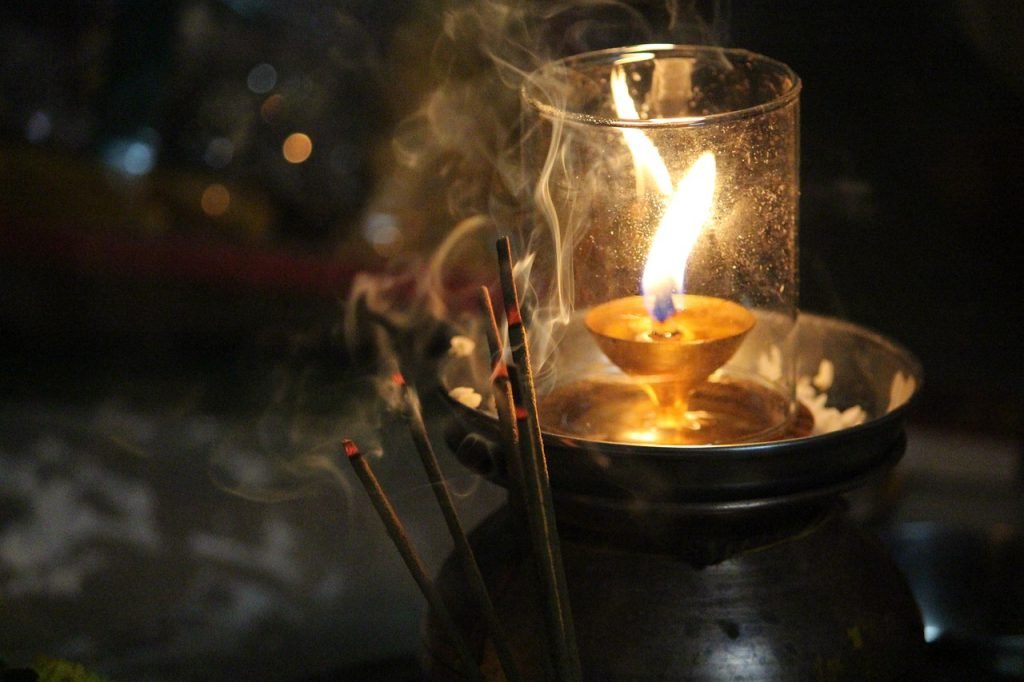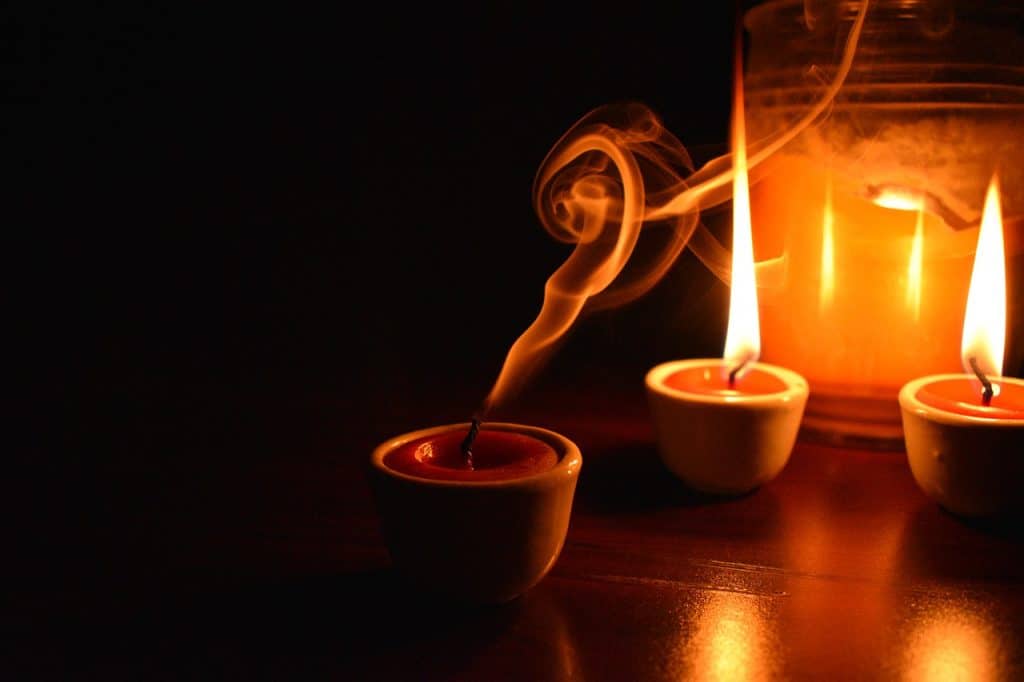To give the soft and ambiance effect to your home, the use of scented candles is becoming very trendy. Even the formal dinners and prayer rituals are considered incomplete without the calming effect of beautiful scented candles. One of our more powerful senses is the sense of smell that can bring nostalgia, evoke emotions and a calming effect. Thus, if you want to make your celebration or any occasion unforgettable, you will think about scented candles. Nowadays many people started using scented candles for home décor to give a soothing and ambiance effect to their home.
Due to its growing popularity and increasing trend, many unprofessional and inexperienced small businessmen started producing them without giving any concern about the quality of scented candles. Other than being a fire hazard, a bad quality scented candle can produces chemical toxins that can affect your health badly. Let’s have a look at the details of scented candles and the dangers related to them
Scented candles
Scented candles due to their malodorous aroma make the surrounding very pleasant and invigorating. Some of the best fragrances of scented candles are lavender, jasmine, rose, peppermint and cinnamon. So no one can deny their calming effect on the human body butit has very negative effects on health leading to serious complications on prolonged exposure. On burning, scented candles release so small particles that they are readily absorbed in our bloodstream or via skin thus considered as a health hazard.Composition and quality of scented candle is the main concern while selecting candles.
In the case of general composition, scented candles are made up of
- Wax (fuel of the candle)
- Scented or essential oils for fragrance
- Colors to enhance the beauty of candle
- Wick ( candle’s fuel pump)
- Oil spray (to grease inside of the jar before pouring wax)
- Candle molds (jars or containers)
This is the general composition, alongwith the type and quality of every ingredient must be considered while buying to avoid dangerous toxic chemicals.
- Wax
Owing to the cost-effectiveness and easy availability of paraffin wax, it is the most commonly used wax in scented candles. It is the hydrocarbon-based byproduct of petroleum from fossil fuels like coal and shale oil. The waste product of petroleum is chemically bleached, deodorized to make paraffin wax. On burning it produces carcinogenic aromatic compounds that are benzene and its derivatives. Other than these toxins, soot from paraffin also remain suspended in the air for hours causing air pollution and danger to health on inhalation of such particles.
According to recent studies, soot emission from scented candles is much higher than non-scented candles making them more dangerous.
- Fragrance oils
Synthetic fragrance oil mixed in wax is composed of industrial chemical phthalates; esters of phthalic acid. On the burning of synthetic fragrance oils, volatile organic compounds (VOC) containing formaldehyde, esters, petroleum distillates, alcohol and limonene are released. On burning, these toxins release into the air and absorbed via skin or inhaled. Due to its ability to readily absorb in the body, it can causedamage to livers, lungs, reproductive system and kidney. Other than that it plays a role in aggravating allergic symptoms, asthma and alters hormone levels.
Instead of using these synthetic fragrances, try using scented candles that are purely made up of essential oils extracted from fruits, plants or spices. They are much safer to use as being natural, dangers of toxins are minimal.
- Colors
Similarly, colors or dyes mixed in wax to make candles more appealing should be of good quality. Poor quality article dyes can produce harmful chemicals dangerous for us. Along with that quantity of artificial dye also matters. If it is heavily dyed, it will clog the wax thus candle has t struggles for burning leading to incomplete combustion
- Wick
Wick can also be the source of dangerous toxins in scented candles. Its composition, design and length all matters while making scented candles. Mostly scented candles’ wicks are made up of braided cotton. Rarely did it also make up of paper threads,wood and heavy metals like lead (mostly in China). Nowadays scented candles have cored wicks i.e., cotton wrapped around metal as a support to keep the wax clean from wick debris. As the fragrance oil is mixed in wax for the aroma of such candles, the wax is softened so this design of cored wicks helps the wick to stay limp. If the metal used in cored wicks is lead, it is very dangerous as it affects the mental development of children. So it is preferable to use zinc and tin in cored wicks instead of poisonous lead.
Similarly, the length of wick also plays an important role as it acts as a fuel pump so it must be of appropriate length; the recommended length of wick is ¼ inches. The longer the wick, the more struggles it will face taking the fuel to the flame thus leading to incomplete combustion releasing toxins across the room. Similarly note the shape of nick, if it is mushroom-shaped, trim it off immediately.
Toxins produced by scented candles
- The burning of candle can be very dangerous as it releases volatile organic compounds like formaldehyde, limonene, alcohol etc that are considered hazardous as they aggravate dizziness, allergy, asthma and cancer.
- Scented candles constituting paraffin wax on burning releasesaromatic compounds, acetone, benzene and its derivative toulene that are carcinogenic. Recent studies show that even if the candle is not burning, the paraffin wax keeps on emitting a small amount of benzene into the air.
- Incomplete combustion of any hydrocarbon-based material (paraffin wax) can produce carbon monoxide that is a poisonous gas.
- Lead containing wick is hazardous especially for the children’s mental growth and pollution as it releases vapors containing lead
- Fragrance oils mostly containphthalates; esters of phthalic acid that aggravates allergy, asthma and altershormone levels.
- Due to the accumulation of such toxins, the inborn air quality reduces as well. And if because of prolonged exposure, you keep inhaling the polluted air full of carcinogens and toxins it can be very dangerous.
Effects on the Human Body
- Volatile organic compounds released by scented candles results in serious health complications like aggravated headaches, migraines, allergy, respiratory tract infections and cancer
- If composed of paraffin wax that produces benzene and its derivative that are carcinogenic i.e., on prolonged exposure they are more likely to cause cancer and skin problems. Due to the small size, they can deeply and easily penetrate the bloodstream causing serious health complications.
- In the case of wick containing heavy metals like lead will cause hormone disruption, learning and mental health problems.
- Incomplete combustion of any hydrocarbon-based material (paraffin wax) can produce carbon monoxide that is a poisonous gas and itsexposure and inhalation affects the human brain causing neurological problemsor even stroke.
- Deposition of such small chemical toxins can lead to hardening and narrowing of arteries i.e., arteriosclerosis leading to cardiovascular diseases.
- Pthatles from fragrance oils aggravated asthma, allergy and causes damage to lungs, kidneys and reproductive systems thus cause developmental difficulties.
Healthy alternatives
As nowadays almost everyone is fond of candles because of their ambiance, soft and comforting effects. Paraffin wax must be banned because of its hazardous effects, instead of that try usingvegetable-based candles having more natural wax like100 % beeswax or soy wax. Among them, beeswax being denser burns for a longer duration compared to soy wax.
Prefer scented candles having braided cotton or threaded paper wicks, as heavy metal containing wicks can cause serious mental complication on prolonged exposure. Or if you want to use acrooked wick to avoid debris in wax, use one that contains zinc or tin instead of lead. Always keep the length of your wick ¼ inches to avoid incomplete combustion.
Use essential oil in a diffuser for fragrance or aroma instead of scented candles to avoid any health hazards.
Similarly, place simmer spices like cinnamon sticks in a water pot and let it simmer on the stove for aroma. Dried items like flowers, fruit rinds and berries put in fabric bags can be placed around the home for fragrance.
Precautions
Occasionally using scented candles is not so dangerous but if you are addicted to aroma of scented candles in your home all the time, then the frequent and prolonged inhalation of toxins release by these scented candles can be very dangerous. Try to use scented candles if must, occasionally to avoid the dangers as much as you can. Some precautions of using scented candles must be followed to reduce its dangers and for the safety of your health and home. Some of the precautions are as follows
- Don’t use scented candles for consecutive more than 3 to 4 hours. Avoid using them unnecessarily.
- Prefer vegetable-based candles instead of petroleum-based. For this 100% beeswax is preferable as being denser it keeps on burning and spreading aroma for a longer duration.
- Prefer cotton and paper wick and trim its length regularly upto ¼ inches. Avoid using wick containing heavy metals like lead
- Use essential oil fragrances instead of synthetic fragrances as they donot produce any toxic chemicals
- Avoid highly-dyed candles as they can clog the wax resulting in incomplete combustion and release toxins
- Place in a well-ventilated area to avoid the accumulation of unwanted particles in the air leading to indoor air pollution
- Avoid drafts or gusty winds as it makes candle struggle to keep burning resulting in incomplete combustion
- Avoid placing them at window sills or near curtain as it can be a fire hazard
We all love the use of scented candles but try to use them as little as you can with all the precautions to keep yourself and your family healthy.




